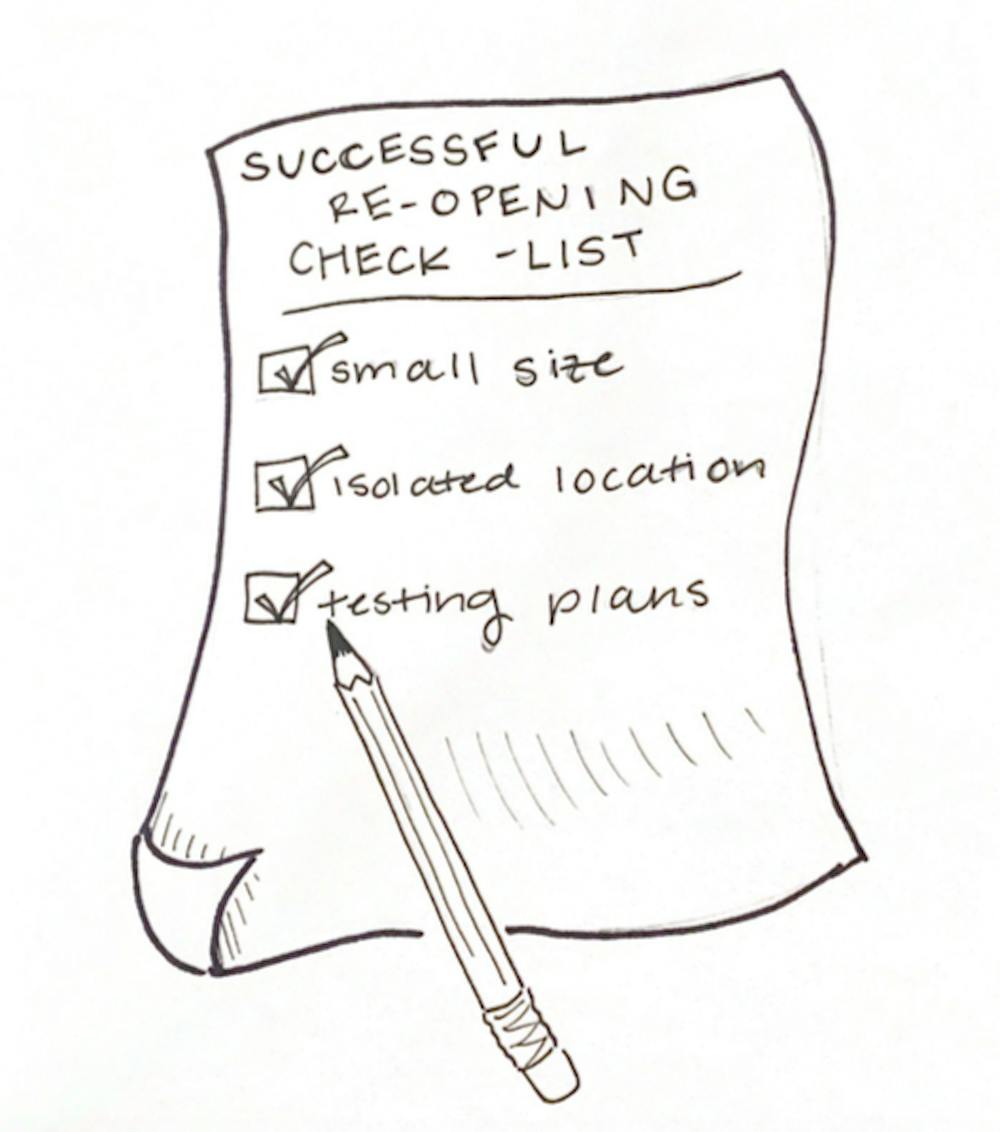While large universities around the country are becoming Covid-19 hotspots, the 11 schools in the NESCAC — which have far fewer students and are generally located in low-density areas — have kept their Covid-19 cases extremely low so far.
Middlebury College has only seen two total active cases, and both students have since recovered. All NESCAC schools except for Tufts University have had fewer than five positive cases. Tufts — which is over twice the size of the other NESCAC schools and is located in a major city — has had nine new positive tests in the last week, with a total of 26 Covid-19 cases.
In contrast, several large universities across the country have witnessed catastrophic Covid-19 outbreaks. The University of North Carolina at Chapel Hill evacuated students after testing revealed a positivity rate of 13%, while the University of Georgia and University of Wisconsin-Madison both reported over 1,000 cases in the past week.
All NESCAC schools tested students upon arrival, instated a quarantine period afterward, and are now intermittently testing students through the Broad Institute, a testing provider based in Cambridge, Mass. Bates College and Bowdoin College are testing all students twice per week, whereas Middlebury and Connecticut College are performing tests on a portion of the student body each week in addition to testing students who show symptoms.
In late August, Middlebury welcomed 2,161 students back to campus, with an additional 85 students living in off-campus housing and 329 studying fully remotely. Bowdoin College was the only NESCAC not to invite all students back, permitting just 653 students — or 40% — back to campus and prioritizing first-year and transfer students, with some other exceptions. The Bowdoin Orient reported that 75% of students were dissatisfied with this decision.
Some NESCAC schools are adjusting their academic policies to allow increased flexibility. Bates College is proceeding with two 7.5-week modules instead of a traditional semester. Williams College is allowing students to take as many classes Pass/Fail as they want, and Trinity College is allowing students to graduate with 1.5 fewer credits than are usually required. Tufts is allowing students to graduate after only six full-time semesters instead of the previous requirement of eight, offering increased flexibility for students to attend part-time. Middlebury has also modified its academic policy, allowing students to take up to one course during the fall 2020 and spring 2021 semesters on a credit/no-credit basis.
Amherst has moved many classes to outdoor spaces and installed temperature monitors at the entrance to several student buildings. To reduce the spread of germs, Hamilton College spaced out classes by 20 minutes for classroom cleaning and Williams converted most housing to single-occupancy.
NESCAC schools have already had to penalize students for breaking Covid-19 safety rules. Dean of Students Derek Doucet told The Campus that several students have already been asked to leave campus, while more are awaiting appeals for violating guidelines. Bowdoin has also asked a first-year student to leave campus for violating the seven-page community agreement that all students studying on campus had to sign. One reason for this strict enforcement is that most NESCAC schools occupy small towns with limited healthcare services.
The cost of testing and implementing Covid-19 regulations is putting new financial pressure on NESCAC schools. Middlebury has allocated $5 million to cover costs created by the pandemic and increased tuition by the standard of 3%. Bowdoin will spend $875,000 on testing this year. Williams is the only NESCAC school to reduce tuition due to the pandemic, lowering the total by 15% for all students, in addition to eliminating the student activities fee. Trinity is keeping tuition stagnant at the 2019-2020 level.
But not all small colleges have been able to maintain low Covid-19 rates. Colorado College shifted to fully remote learning after 11 of their 800 on-campus students tested positive and an entire dorm of 150 students was quarantined.
Vermont has maintained one of the lowest Covid-19 rates in the country, and only 38 out of 42,109 total tests at Vermont colleges have been positive, according to the Vermont Department of Health. The largest college in the state, the University of Vermont, has seen 15 positive cases so far.
While many large and urban universities are suffering from uncontrolled outbreaks, schools in the NESCAC and Vermont colleges are maintaining low rates by merit of advantageous size and geography, bolstered by strict rules and frequent testing.

Lily Jones ’23 is an online editor and senior writer.
She previously served as a Senior News Writer and SGA Correspondent.
Jones is double majoring in Philosophy and Political Science. She also is an intern for the Rohatyn Center for Global Affairs and on the ultimate frisbee team.




